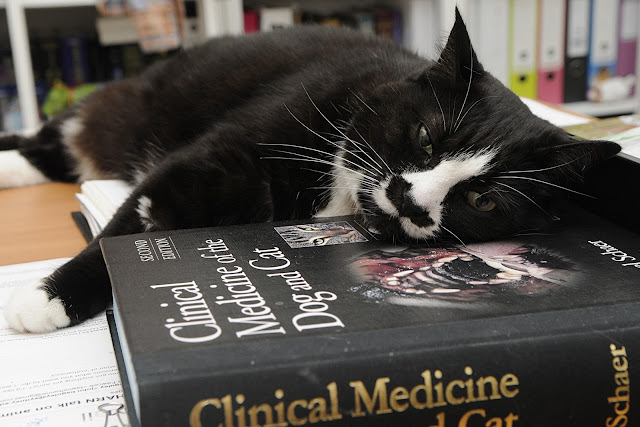 |
| I know which shelf I'd prefer to peruse all day... |
Exams are upon us once again. The anticipation of exams can paralyse a rational person with fear. Try a few of these tips to get out of the procrastination funk and into productive study mode.
1. Transform the unit of study learning outcomes into exam questions. For example, if the learning outcome for pharmacology is “Discuss the difference between dose related (type A) and idiosyncratic (type B) ADRs and be able to give one example of each”, the corresponding exam question might be “Explain/discuss the differences between type A and type B adverse drug reactions and give an example of each”. Not much transformation involved at all!!!
2. Compare your answers with a friend. For some people this is overwhelming, but I just found over and over that someone else would always come up with a) a different piece of information or example that I had not thought of; b) a different angle or analysis c) a different perspective….this added to my learning. Also reading their answers after you have written your own can be reassuring (oh, so we’re on the same track); motivating (wow, I better work on this a bit more) and helpful in terms of revision (you’ve written your answer, now read theirs, then go back and edit your own answer – revising it again).
3. If past papers are available, do these. I used to think this was somehow disingenuous, a cynical way of learning. But it HELPS. Past papers can focus you on what is most important – examiners want to know that you understand the basics, that you can apply what you need to know from their subject. Some questions DO come up again, but even if they don’t exams can help structure your learning.
4. Make it emotional. If you’re not sure where to start or how to organise the information – let’s say about mitral valve regurgitation – ask yourself: if this were my own dog, what would I need to know? How would I explain this disease process to the owner? What would I tell them about prognosis and management? Or…how would you explain it to a fellow vet student who missed the lecture?
5. Start before you are ready. I used to think “I will start studying once I have done x, y and z” or “once I feel in the right emotional state” etc. Time would tick by. But if I just committed to working on it for ten minutes, I would get started and it would be easier to work for twenty or thirty etc.
6. Don’t get bogged down on one thing. If you are really stuck, move on. You need to use your time efficiently…okay so you can’t quite understand ventilation-perfusion mismatch. Ask a friend to explain, return to your class notes, ask Dr Google – do whatever you need to do – but then move on. You can waste half a day on one concept. (That’s what semesters are for, not study vacation…)(which by the way is a total oxymoron).









+The+artist_'s%2520dog%25202010.jpg)
+Untitled+_+999+2003.+Oil+on+masonite,+30.0+x+30.0%C2%A0cm.+Image+courtesy+of+the+artist+and+Roslyn+Oxley9+Gallery,+Sydney.jpg)

+Diggers+2005.+Oil+on+canvas,+159.5+x+119.0%C2%A0cm.+Image+courtesy+of+the+artist+and+Darren+Knight+Gallery,+Sydney.jpg)



